When Dhakeshwari arrives

Occurring annually, Durga Puja has always been one of the largest and most colourful festivals in Bangladesh. It marks the victory of Goddess Durga over the demon Mahishasura, after ten days and nine nights of battling him. Moreover, it transcends its religious and cultural relevance to stand tall as a resilient symbol of power for women as well.
When it comes to Durga Puja, the land of Bengal specifically bears significance as it is a part of a sacred geographical layout according to ancient Shakto/Hindu history. This divine geography extends to the bustling city of Dhaka and this is why Ma Durga is popularly known as 'Dhakeshwari' or the Goddess of Dhaka who protects this city against all harms and evils.
Durga Puja holds unique meanings in people's hearts and brings them together. "To me, it means 'family' because it is the only time of the year where I get to reunite with all my loved ones," explained Parbon Acharjee, Management Trainee at Banglalink Digital Communications Limited.
While Monojit Saha, a student of University of Dhaka seconded that feeling, he also added that he finds it really amusing to show his non-Hindu friends around all the mandaps and highlight the puja nitty-gritties. "It gives me a real feeling of sharing the joy of Durga Puja which I couldn't really have explored otherwise," Saha justified.
While preparing for Durga Puja, devotees dedicate their hard work, care, and love to make every aspect of the celebration breathtakingly beautiful. Even the idol for veneration can take up to a month or longer to be completed. "This is why highly adept sculptors are hired a few months beforehand from across the nation to encapsulate the divine beauty of Ma Durga with utmost perfection in her 'murti'," Saha pointed out. Furthermore, each year, Goddess Durga arrives on a different mythical transport than the previous one. This year, she is set to appear on a horse.
Dhakeshwari Temple, the national temple in Dhaka, is undoubtedly the most visited and arranges the biggest platform for veneration. Besides these, one might find several makeshift veneration spots or 'mandaps' around the city. Shankhari Bazar is one such hotspot filled with mandaps and festivities. Acharjee admitted that nowadays, it is indeed pleasantly surprising to see brand new puja mandaps popping up every year all over the capital. "It gives you a chance to explore new places and enjoy the stunning decorations and cultural programs," he furthered.
In Dhaka, this celebration is renowned for its 'sharbojonin' aspect, which literally means an event where anyone and everyone can take part in. The ten-day long festivity truly takes off in the last six days, starting off with 'Bodhon' or the incarnation of the goddess on Shashthi, or the sixth day of puja. The final day is called 'Bijoya Dashami' and marks the end of Durga Puja. As her loyal devotees bid her farewell in the process of 'Bishorjon' (immersion), Ma Durga, victorious against malevolence, is immersed into the water, marking the end of the grand Durga Puja.

 For all latest news, follow The Daily Star's Google News channel.
For all latest news, follow The Daily Star's Google News channel. 

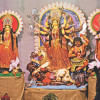
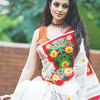
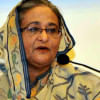
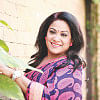
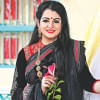


Comments